At the end of World War II, there were only 31 Przewalski's horses left in captivity, and nine of them that were able to reproduce became the ancestors of all the Przewalski's horses we see today. The inbreeding problem was always the "Sword of Damocles" hanging over the species.
In the 1980s and 1990s, international conservation organizations began to re-introduce the Przewalski's horse into China and Mongolia where it once lived, in the hope of bringing the species to the wild steppes again and increasing genetic diversity.
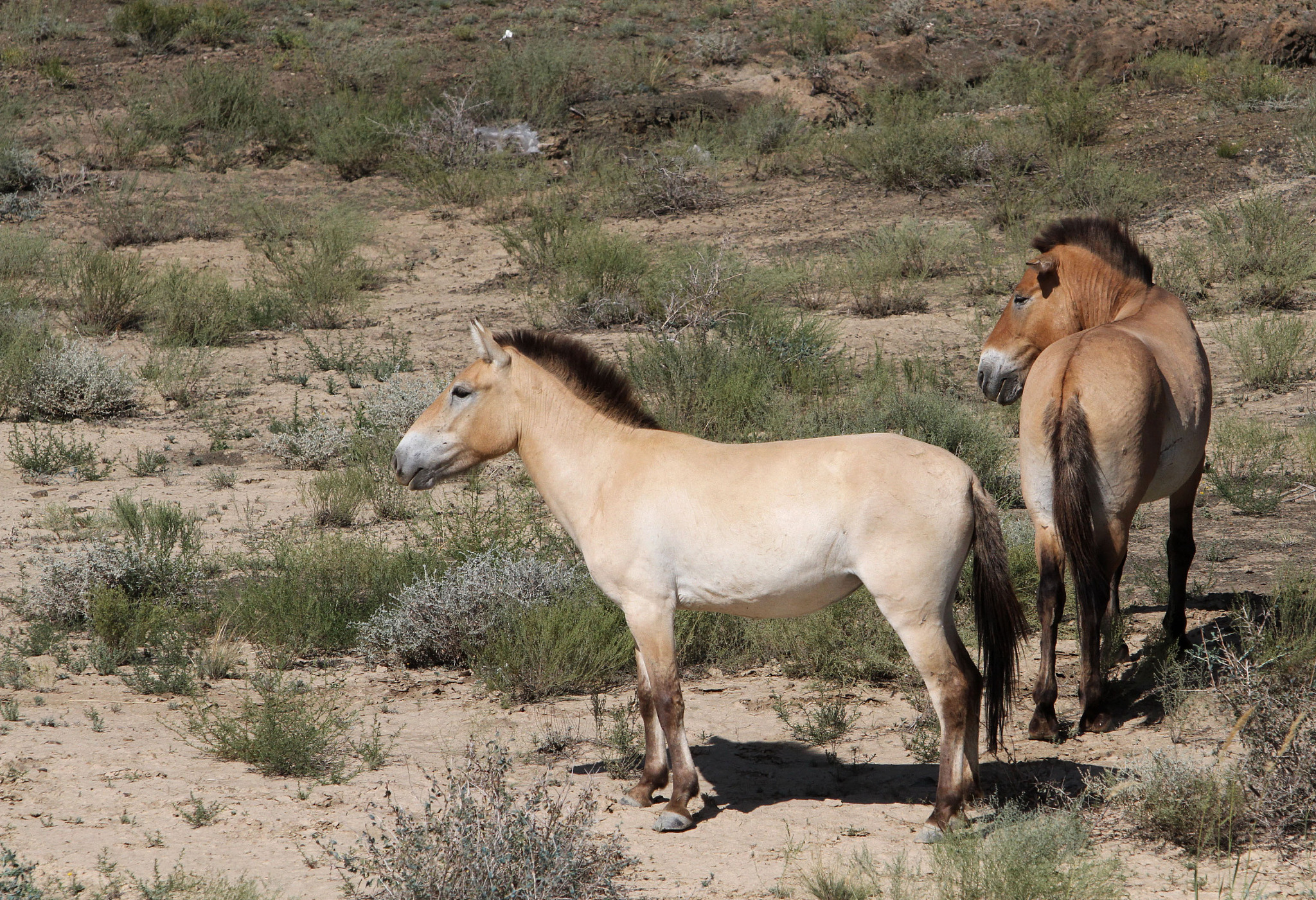
Two Przewalski's horses standing in northwest China's Xinjiang Uygur Autonomous Region. /VCG
Two Przewalski's horses standing in northwest China's Xinjiang Uygur Autonomous Region. /VCG
Considering that the Przewalski's horse used to roam in Junggar Basin in northwest China's Xinjiang Uygur Autonomous Region, 11 Przewalski's horses were first sent from Germany and Britain to the zoo in Urumqi, Xinjiang, for transition in 1985, and relocated to the Xinjiang Wild Horse Breeding and Research Center after 16 months.
Another three batches of horses from the U.S. and Germany arrived at the center later, bringing the total number to 24. They became the forefathers of the Przewalski's horses living in Xinjiang today. In 1988, the first foal was born at the center after the horse returned to its homeland, and named "Junggar No.1." The young lady soon gave birth to the second generation in 1995, signaling that the species can successfully breed in China.
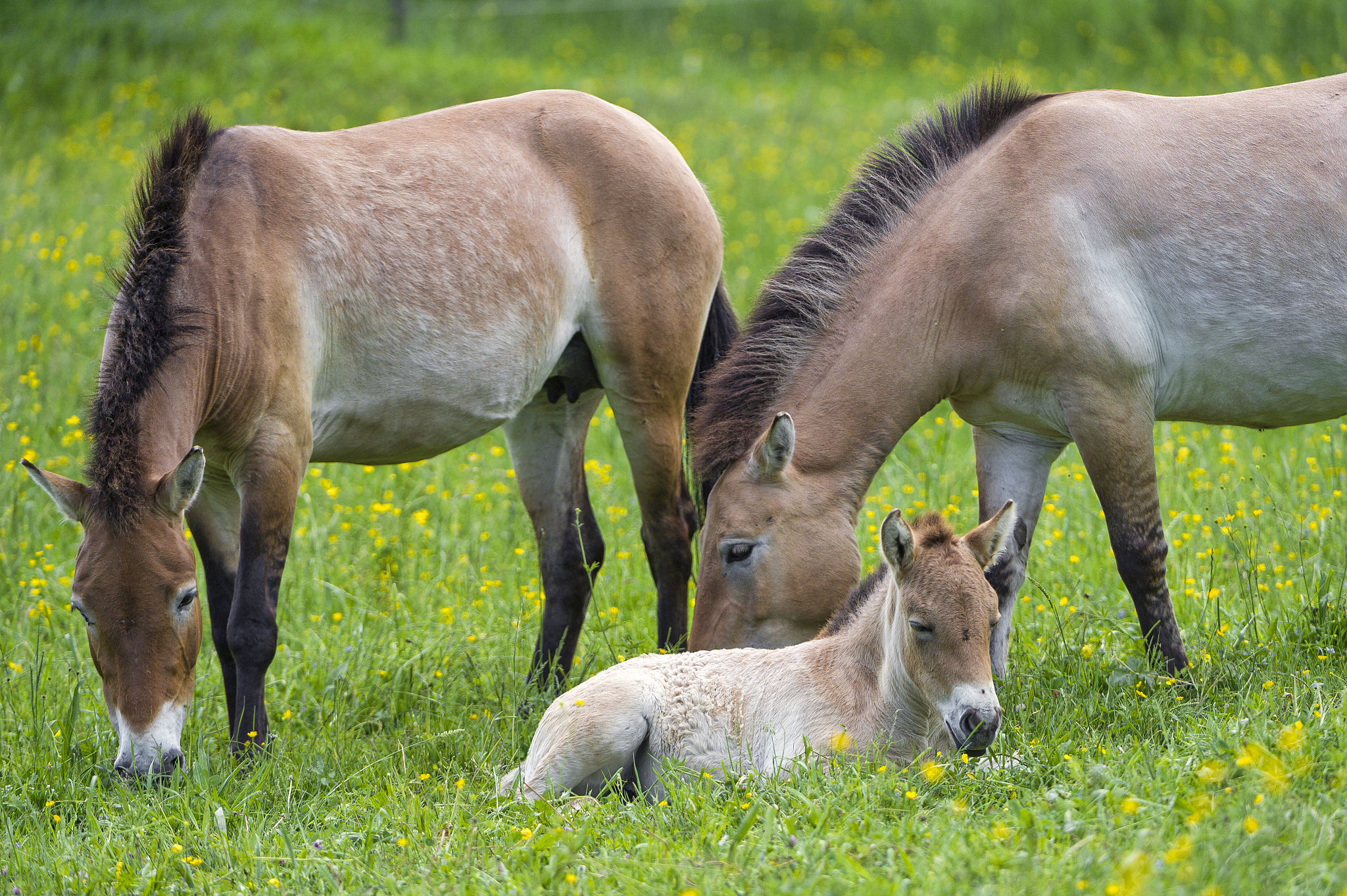
A Przewalski's horse family in the grass. /VCG
A Przewalski's horse family in the grass. /VCG
Apart from Xinjiang, the Przewalski's horse was once distributed around Mount Mazong, on the border of Gansu Province and Inner Mongolia Autonomous Region. Thus, the second breeding center of the Przewalski's horse was founded in Wuwei City, northwest China's Gansu Province. In 1989, the center introduced 10 horses from zoos in the U.S., Germany and Beijing and was dedicated to the deed of saving the species.
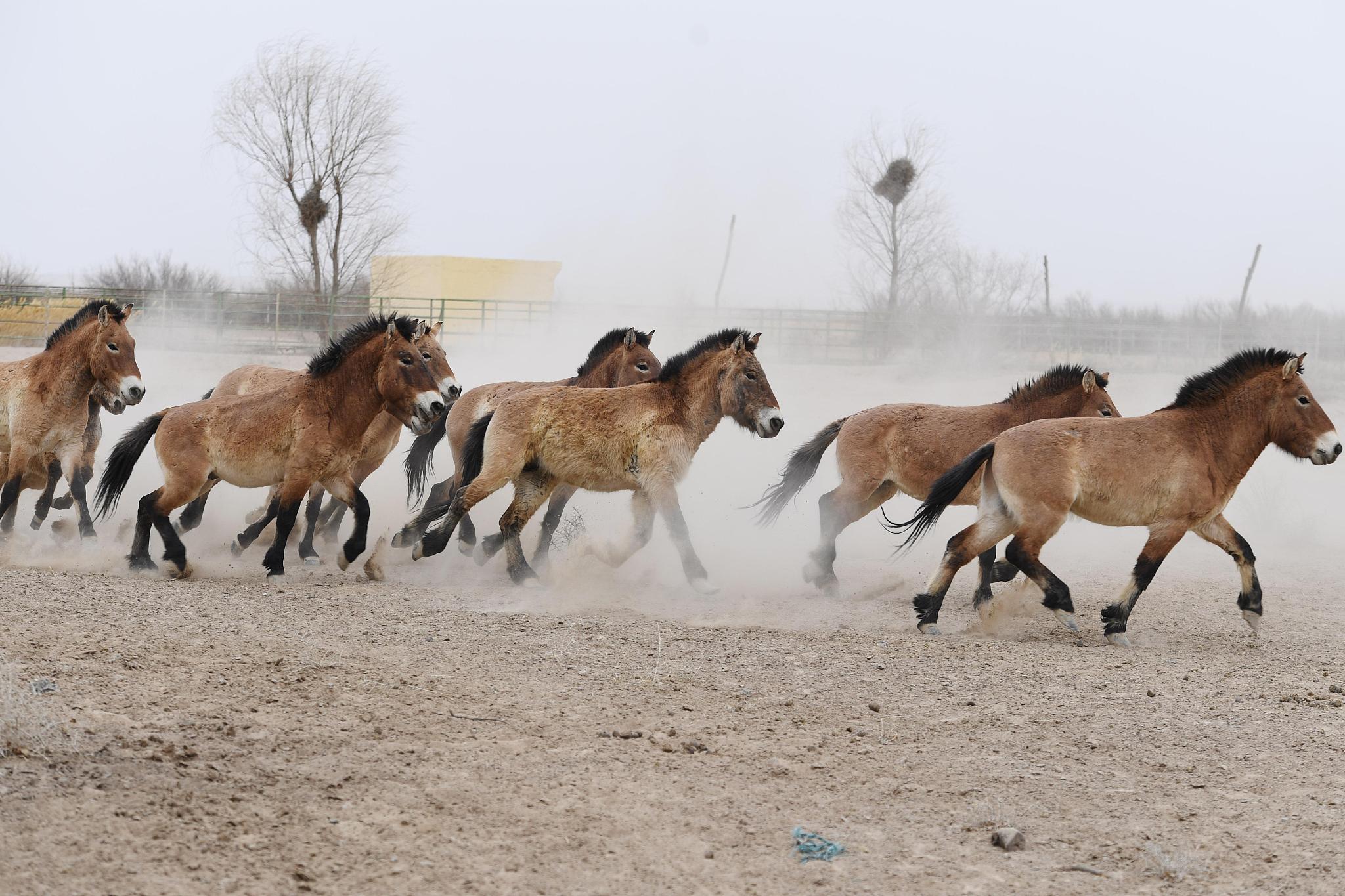
A herd of running Przewalski's horses in Wuwei City, northwest China's Gansu Province. /VCG
A herd of running Przewalski's horses in Wuwei City, northwest China's Gansu Province. /VCG
Over the years, the population of Przewalski's horses in China grew steadily, which gave confidence to scientists and conservationists. In 2001, 27 Przewalski's horses embarked on a new trip in the Kalamaili Nature Reserve in Xinjiang. They became the first herd of horses released into the wild in China.
Not all of the released horses have become accustomed to living in the wild – some were killed by wolves, some had trouble finding food in the winter. Only a small number of horses have gotten used to living independent lives in the wild.
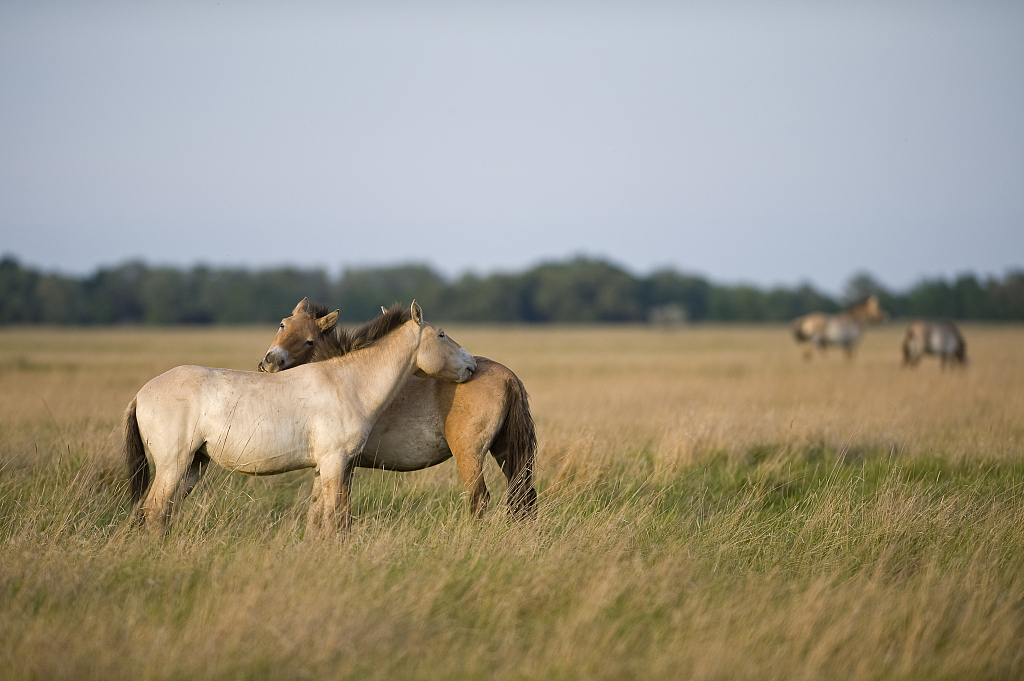
Two Przewalski's horses groom each other. /VCG
Two Przewalski's horses groom each other. /VCG
As of 2020, the population of Przewalski's horses in Xinjiang has reached 479, with 96 in captivity, 267 in the wild and 116 in semi-captivity. According to the director of the Endangered Animal Protection Center of Gansu Province, there were 155 Przewalski's horses in Gansu in 2019, with 48 in captivity and 107 in the wild.
With the total number of Przewalski's horse exceeding 600, China is now home to one-third of the global Przewalski's horse population. The IUCN Red List of Threatened Species changed its status from Extinct in the Wild to Critically Endangered in 2008, and to Endangered in 2011. Concessions made by humans have given the horse a second chance to roam freely in the wild.
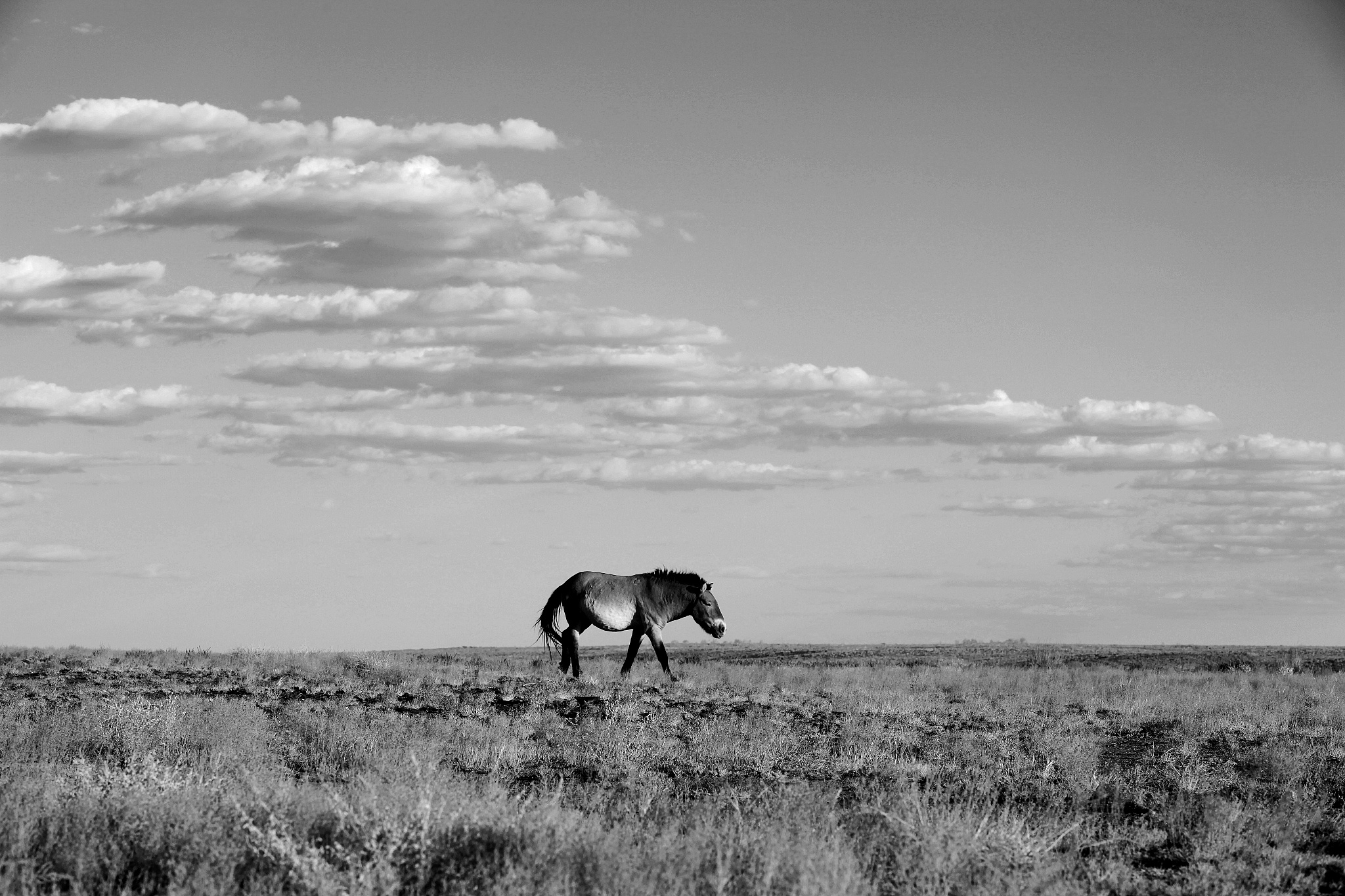
A Przewalski's horse roaming freely on the steppe in northwest China's Xinjiang Uygur Autonomous Region. /VCG
A Przewalski's horse roaming freely on the steppe in northwest China's Xinjiang Uygur Autonomous Region. /VCG
About 'Lost then Found' series:
Many species on Earth went extinct because of environmental changes, evolutionary problems, habitat loss or human activity. The disappearance of species from Earth is ongoing, but some species are lucky to have survived thanks to conservation efforts. In this series, CGTN will guide you through the journey of saving these creatures from extinction.
For more:
The intriguing past of Przewalski's horse
(Cover image designed by CGTN's Yin Yating.)
(If you want to contribute and have specific expertise, please contact us at nature@cgtn.com.)

